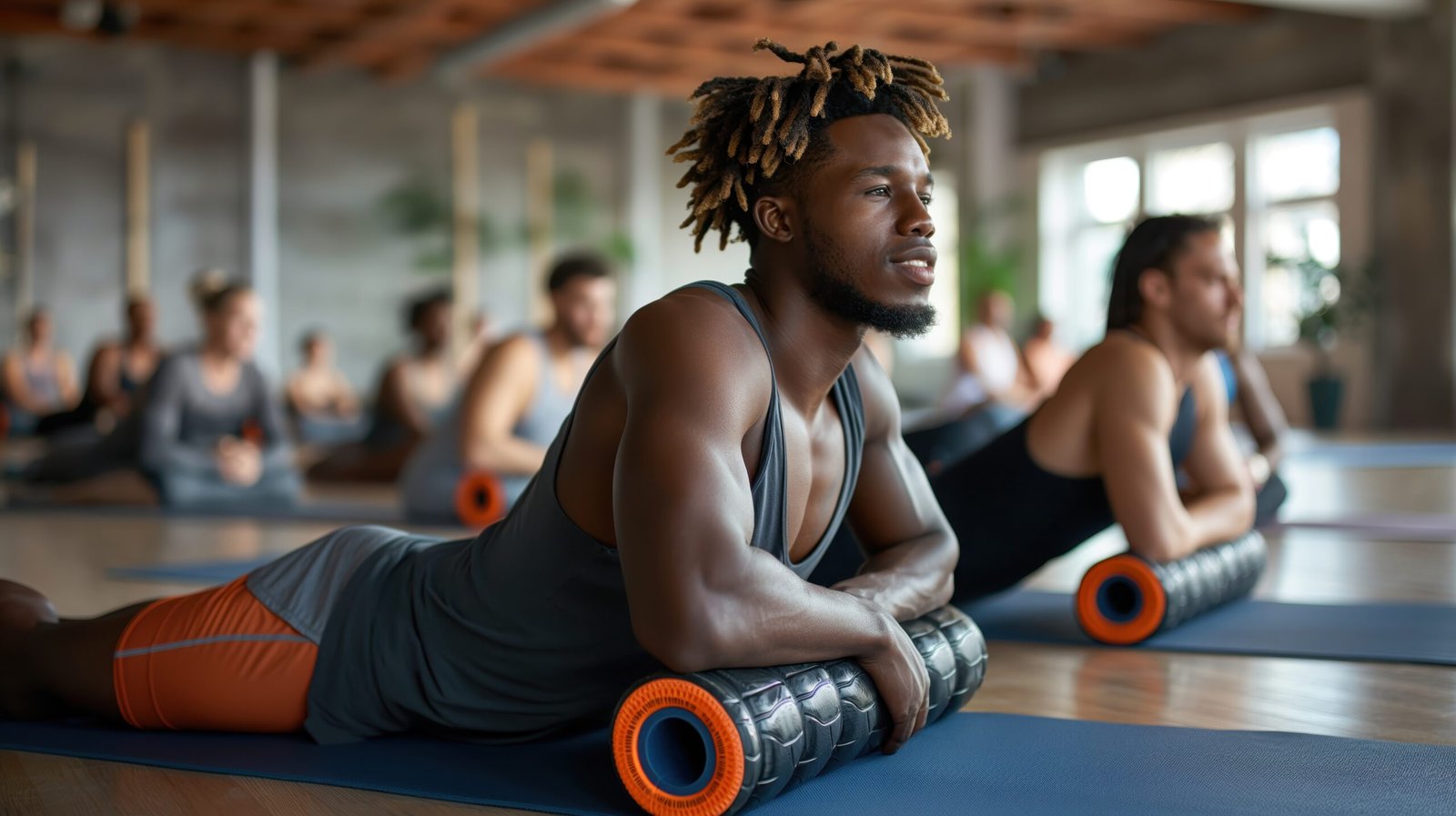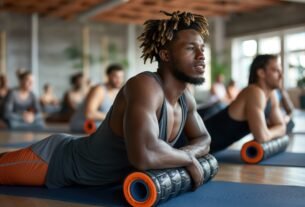If you’ve ever finished an intense workout, you know the feeling all too well: sore muscles, tightness, and that constant urge to stretch it out. But here’s the catch: should you be foam rolling those muscles, or is stretching the better way to go? It’s a question that gets thrown around a lot, and let’s be honest—it can be confusing.
Both foam rolling and stretching are highly popular recovery techniques, but they’re not exactly the same thing. And while they both help ease muscle tension, improve flexibility, and promote recovery, they each have unique benefits. So, what’s the real answer? Which is better for recovery—foam rolling or stretching?
In this article, we’ll dive deep into both methods, explore the science behind them, and help you figure out which one (or combination) will give you the fastest, most effective recovery.
The Problem: Foam Rolling vs. Stretching—Which One to Choose?
Let’s face it: after a tough workout, you want relief now. You want something that works, something that will alleviate soreness and leave you feeling ready for your next round of exercise. But with so many techniques available, how do you know if foam rolling or stretching is the right choice?
Maybe you’ve heard friends swear by foam rolling (I know I do), while others rave about the benefits of stretching (not a big fan myself). The truth is, both are effective—but they’re not always interchangeable. So, let’s break it down.
What is Foam Rolling?
Foam rolling is a form of self-myofascial release (SMR), a fancy term for “self-massage.” Using a foam roller, you apply pressure to different parts of your body to target tight, sore muscles and fascia (the connective tissue surrounding muscles). The idea is that by rolling over areas of tension, you can break up adhesions and knots that form in the fascia, allowing the muscle to relax and lengthen.
Benefits of Foam Rolling:
- Reduces muscle tightness: Helps release muscle knots (trigger points) and tightness in areas that are prone to stiffness, like your calves, quads, and back.
- Improves blood flow: By applying pressure to muscle tissue, foam rolling can stimulate blood flow and oxygen delivery to muscles, helping speed up recovery.
- Increases range of motion: Regular foam rolling can improve joint mobility and flexibility, which is especially helpful before or after workouts.
- Decreases muscle soreness: Known for reducing delayed onset muscle soreness (DOMS), foam rolling can help you feel less sore the day after a tough workout.
What is Stretching?
Stretching, on the other hand, is all about lengthening muscles and tendons to improve flexibility and mobility. There are two main types of stretching: static (holding a stretch for a period of time) and dynamic (moving through a stretch in a controlled, repetitive manner).
Benefits of Stretching:
- Increases flexibility: Regular stretching can lengthen muscles and improve flexibility, helping prevent injury during exercise.
- Enhances muscle recovery: Stretching can help muscles return to their normal length after exercise, reducing stiffness and aiding in faster recovery.
- Relieves tension: Stretching can help release muscle tightness, improve posture, and reduce stress, especially when paired with deep breathing.
- Improves blood circulation: Like foam rolling, stretching helps to promote healthy circulation, ensuring that muscles get the nutrients they need for repair.
Foam Rolling vs. Stretching: What’s the Difference?
At this point, you might be wondering, “Okay, so both help with muscle recovery, but what’s the real difference?”
Let’s break it down:
- Action: Foam rolling targets the fascia (the connective tissue) and muscles through pressure, whereas stretching mainly targets the muscle fibers themselves by lengthening them.
- Deep Tissue vs. Lengthening: Foam rolling is more of a deep tissue technique, focusing on breaking up knots and adhesions, while stretching is a lengthening technique that helps improve overall muscle flexibility.
- Pain Relief: Foam rolling can provide more immediate relief for sore muscles by loosening up tight spots, while stretching is more about maintaining flexibility and long-term muscle health.
- Time and Effort: Foam rolling may feel more intense (especially in areas that are particularly tight), but it’s generally quicker to perform. Stretching, on the other hand, requires more time and patience, especially if you’re holding each stretch for a longer period.
When Should You Use Foam Rolling or Stretching?
So now that we know the key differences, when should you use each one for optimal recovery?
- Use Foam Rolling When:
- You need to release muscle knots: Foam rolling is incredibly effective for breaking up adhesions in your muscles, especially in spots that are particularly sore or tight after a workout.
- You want quick relief: Foam rolling is a great choice if you’re looking for immediate relief from soreness or tightness. It helps reduce muscle stiffness fast, so it’s a good option before and after your workout.
- You’re dealing with chronic tightness: If you’ve been dealing with long-term muscle tightness or discomfort (say, from sitting all day or repeated activity), foam rolling can target those problem areas and help improve mobility.
- Use Stretching When:
- You’re working on flexibility: If your goal is to improve flexibility, stretching should be a part of your routine. It’s a gentle, effective way to lengthen muscles and tendons.
- You need to cool down: After a workout, stretching can be a great way to bring your body back to a relaxed state, easing muscle tension without putting too much strain on the body.
- You’re trying to prevent injury: Stretching helps maintain a healthy range of motion and flexibility, which can reduce the risk of injury when lifting weights, running, or participating in other physical activities.
Objection Handling: “But Can’t I Just Do One?”
Great question. While foam rolling and stretching have their own unique benefits, they’re not mutually exclusive—you don’t have to choose one or the other. In fact, combining both can lead to even better recovery results!
Here’s how you can do both:
- Start with foam rolling to release tightness and improve blood flow to the muscles. This can help reduce tension and prepare your muscles for stretching.
- After foam rolling, move into static stretching to lengthen the muscles and help improve flexibility.
This combination approach allows you to get the best of both worlds—deeper muscle relaxation from foam rolling and better flexibility from stretching.
Conclusion: Foam Rolling vs. Stretching—Which is Best for You?
There’s no one-size-fits-all answer here. Both foam rolling and stretching are highly effective tools for muscle recovery, and they work best when used together.
- If you’re looking for immediate relief from tight muscles and sore spots, foam rolling is your go-to.
- If your goal is to increase flexibility, improve range of motion, and prevent injury, stretching is a must.
The secret? Use both. Start with foam rolling to release tension, then finish with stretching to enhance flexibility and promote long-term muscle health.
So, the next time you’re deciding between foam rolling and stretching for recovery, remember: it’s not about choosing one—it’s about using both for a balanced, effective recovery routine.







